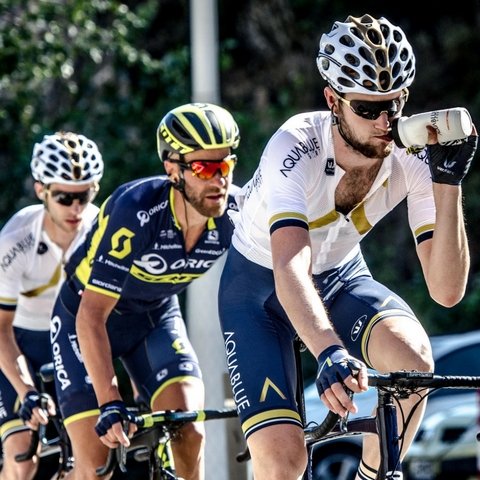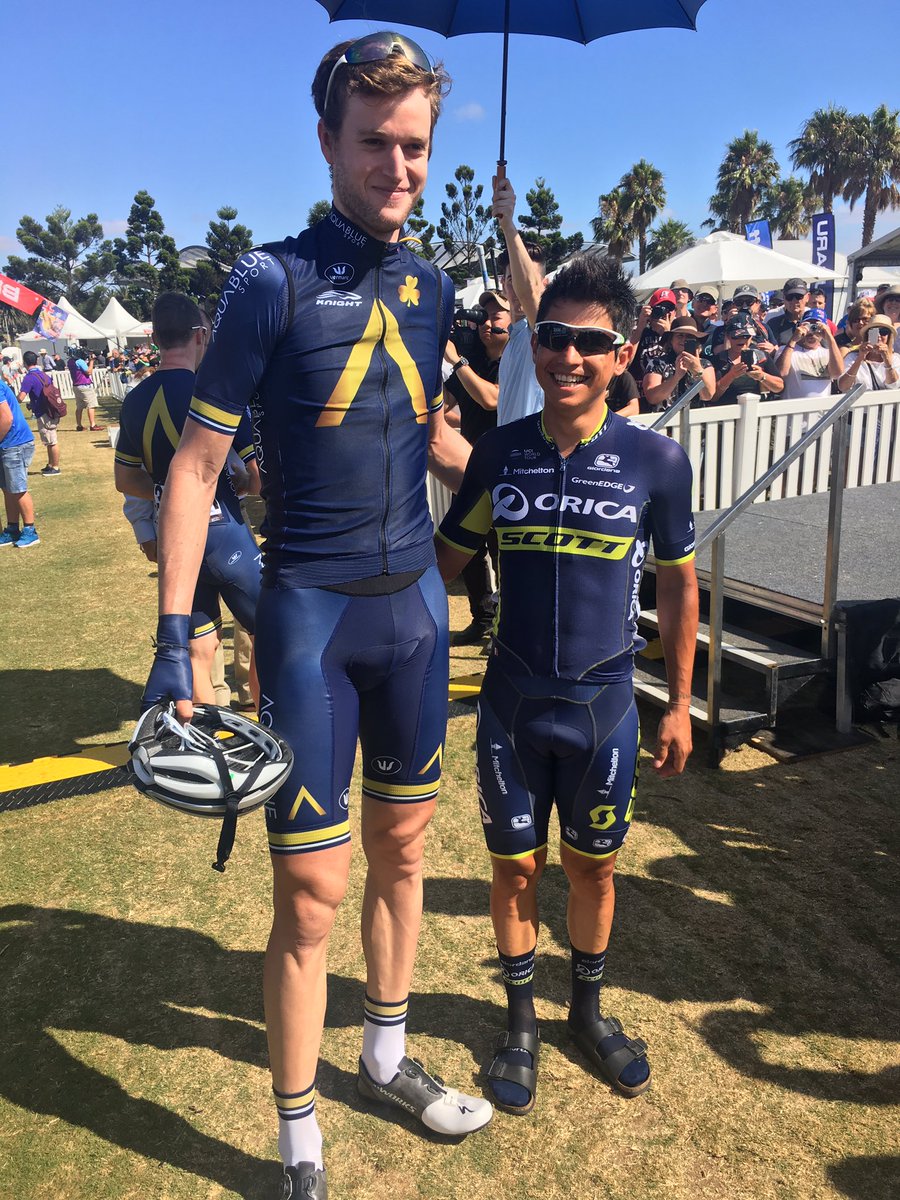By Robbie Broughton
One of the most popular riders to emerge from the peloton this season has been the Irishman Conor Dunne who races for Aquablue. At 2.04m tall he absolutely towers over many of his fellow riders. Conor, nicknamed ‘El Alto’, was the winner of this year’s Lanterne Rouge at the Vuelta Espana, the award given to the last placed finisher of the race.

Conor Dunne at this year's Vuelta
We wondered if height can ever be an advantage to a cyclist in the same way that it can be beneficial in other sports. Clearly, the important figure is the power to weight ratio a rider can produce. But is there an ideal height for cyclists?
While it’s often been said that the best climbers are the little guys, it’s interesting to note that Chris Froome at 1.86m is significantly taller than the diminutive Nairo Quintana at only 1.67m. Going on their respective climbing performances in this year’s Tour de France, it’s clear that the tiny Colombian wasn’t able to make that height difference pay.
There have been a few grand tour winners, like Chris Froome, that were over 6 foot. Bradley Wiggins, Miguel Indurain and Eddie Merckx all exceeded that. But Contador, Pantani, Anquetil and Armstrong were much shorter.

Conor Dunne and Esteban Chaves
A rider’s weight is always going to be crucial, especially when it comes to a grand tour with numerous mountain stages to be completed. Poor old Conor Dunne has managed to get his weight to 88kg but even this meant that he was dragging over 30kg more than some of the specialized climbers over some of the toughest ascents in the world this summer. When you consider that AG2R’s Domenico Pozzovivo weighs in at only 53 kg it doesn’t seem like a very fair competition. It’s not surprising that El ALto was losing so much time on each mountain stage.
Clearly, Conor Dunne is a hugely talented cyclist – he often got into the breakaway at this year’s Vuelta and it’s on these rolling stages that he can really make a difference. And he's an excellent wind break for any teammate sitting on his wheel. However, it’s always going to be tough for him on a mountain heavy parcours that the Vuelta organisers love so much.
A recent study of professional cyclists by Pro Cycling Stats revealed that the average height of the riders was 1.80m and the average weight was 68.8kg. It also found that, when comparing the top 25 sprinters to the top 25 GC riders (assuming that these would include a high number of specialised climbers) that climbers were on average 1.6cm shorter than the sprinters. Not much. The big difference came when their weights were compared: the average climber is 64.2kg and the average sprinter was 71.7kg.
When it comes to time trialing the top 25 rankings reveal their average height to be 181.4cm, 1.4cm more than the average rider and nearly 2cm more than the average climber. We can probably conclude then that that height could well be an advantage at this discipline.
The shortest riders in the peloton on average are the Colombians at a titchy 170.6cm, followed by the Spanish, Italians, Portuguese and French. The tallest were the Germans at 184.9cm ahead of the Swiss, Kiwis, Norwegians and Austrians.
The Brits, interestingly, were 8th smallest out of a list of 23.






























